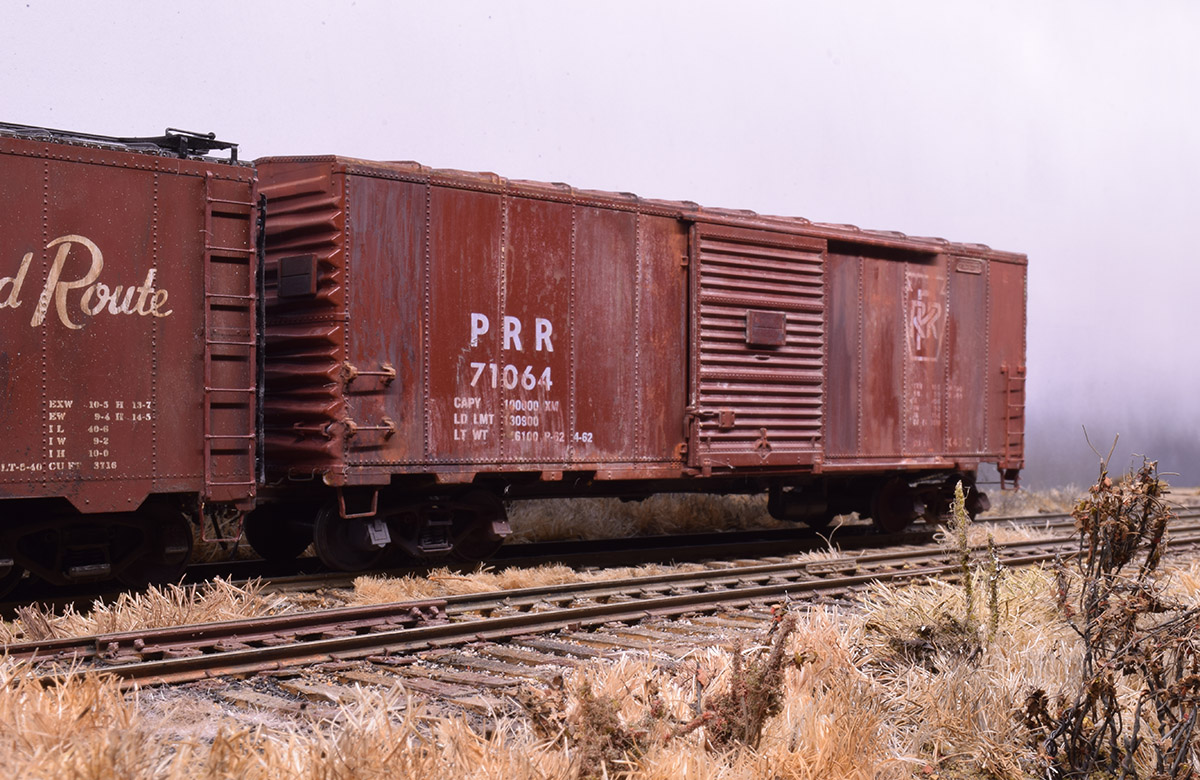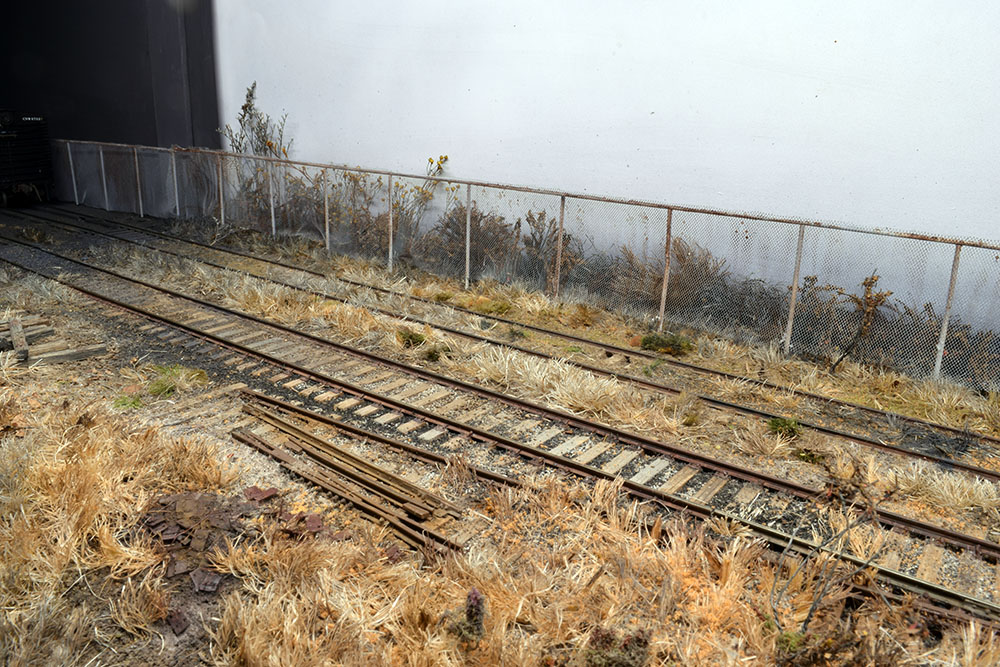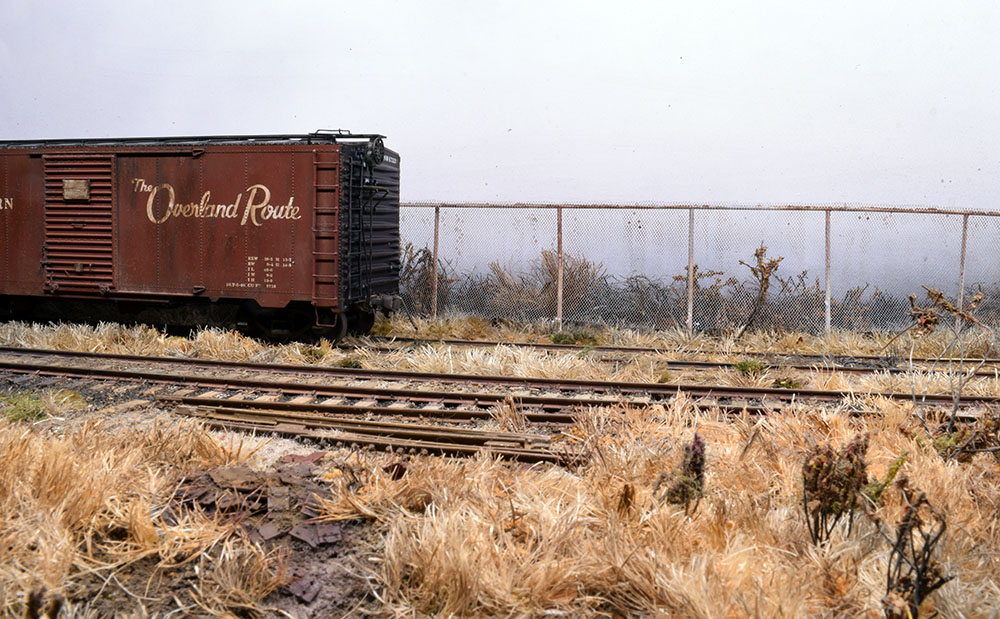Are We Asking The Right Questions?
Greg Amer wanted to know why I felt the need to expand Mill Road. It’s a valid question, so let’s see if we can find an answer that’s helpful.
In the last post, I said that I wanted to experiment with different construction techniques but there were other reasons too.
From the beginning, I’ve suggested that the railroad serves an off-stage customer of some kind that isn’t modeled because of the lack of room for a convincing building. The main driving force behind my periodic expansion schemes centers on the question of how to include a building in a scene that does’t have room for one.
Design or Choices First?
The shallow depth of the scene was a conscious and deliberate choice from the outset. I like the sense of being up close rather than looking at things from a distance.

I always thought of the front track as the running line, where the train would arrive or depart from either end of the scene. The rear track has morphed from an industrial siding, to an interchange, to who knows what all because there is only room for a thin building flat behind it. This would have been fine if I could realistically disguise the edges like I did with the warehouse on 13th and North E Street. That’s difficult to do convincingly here plus, a large building of any kind would destroy the open country feel of the scene and just look strange. If there is a fatal flaw to the composition, this is it.
Must “Industry” Always Include a Building?
We typically assume that any industry must include a building next to the tracks. I get it, buildings are fun to model, they provide character and help convey the story of what the railroad supposedly does. However, is a building always the right choice, or the only choice for that matter? In my view, it isn’t.
While it would be nice to visually complete the cycle of a train car reaching its destination, I finally saw that my original idea of a staged industry is the best solution. By surrendering the idea of a through line, both tracks can serve multiple uses, which would enhance the overall operating potential. Therefore, the two track staging area on this end will represent the unseen industry as originally planned. I could also park the locomotive off stage here if I wanted. So how do I convey what the railroad does without ruining things visually? I discovered the solution was simple: a chain link fence.


Beyond the actual building, few things speak of an industry like chain link fencing. Placing a fence behind the rear track provides an extra degree of depth in what is only a few inches of space . Because of the open weave, the sight of bushes and vegetation between the fence and backdrop is all it takes. You perceive an area in front of the fence, an area behind it and the implied space of the backdrop beyond. Three zones where previously, there were only two.
What Matters Most?
Building stuff aside, what would this expansion have provided in terms of satisfaction or my experience? In truth, not as much as I initially thought.
My motivation for Mill Road is to see how small I can go in quarter-inch scale and still have an interesting scene and operations. At twenty-four feet long the old Indiana & Whitewater felt like too much. It could have been reduced by half and worked just as well if not better. I never did that because I wasn’t ready to take that step yet. Today, after a lot of soul searching, eight to twelve feet in length feels like the sweet spot for my needs.
Are We Asking The Right Questions?
Historically, we’ve been taught to look for answers rather than ask questions. We accept certain premises as a given rather than question whether those practices actually meet our needs.
I’m not immune to the notion that there’s a better version of Mill Road out there. However, in the last few years I’ve discovered that to move forward in the craft, I need to forget everything I ever learned about it. These recurring desires to expand Mill Road under the guise of making it better demonstrate, that’s easier said than done. They also demonstrate how enduring a solid design can be.
Regards,
Mike
My only thought, Mike, and this is wandering a bit from the main consideration of this blog entry, was along the lines of “why does an industry need a building?” Team track, a transfer platform, a coal or gravel conveyor–a lot of the industries on the prototypes I research (downtrodden narrow gauges in the desert or hills) didn’t have buildings at spurs, they were often offline and teamed stuff to some local spur to be shipped. The effect is of locations with the open feel of your layout except on those odd times that something was shipped and a car was suddenly sitting there.
But even the local modern lines here use whatever track is open to offload chemicals into trucks, pull sheets of steel off flats and onto trucks, move lumber loads to trucks, etc. A few bits and suggestions of industrial activity are hinted at by a nozzle or detritus in the grass in the foreground, hinting at the possibilities of action in the future.
The cameos I’ve got on the backburner are all situations like yours, open spaces with no evident industrial footprint. To me that also offers the opportunity for varied car types.
That said, the fence is a lovely solution visually. It perfectly breaks the scene, arrests the eye, adds depth.
Hi Dave,
I understand and agree with all those scenarios. I remember the local dropping off a covered hopper on the siding next to the house that was unloaded with a portable conveyor. With a minimum of track it makes sense to use it fully just like the prototype would.
Mike